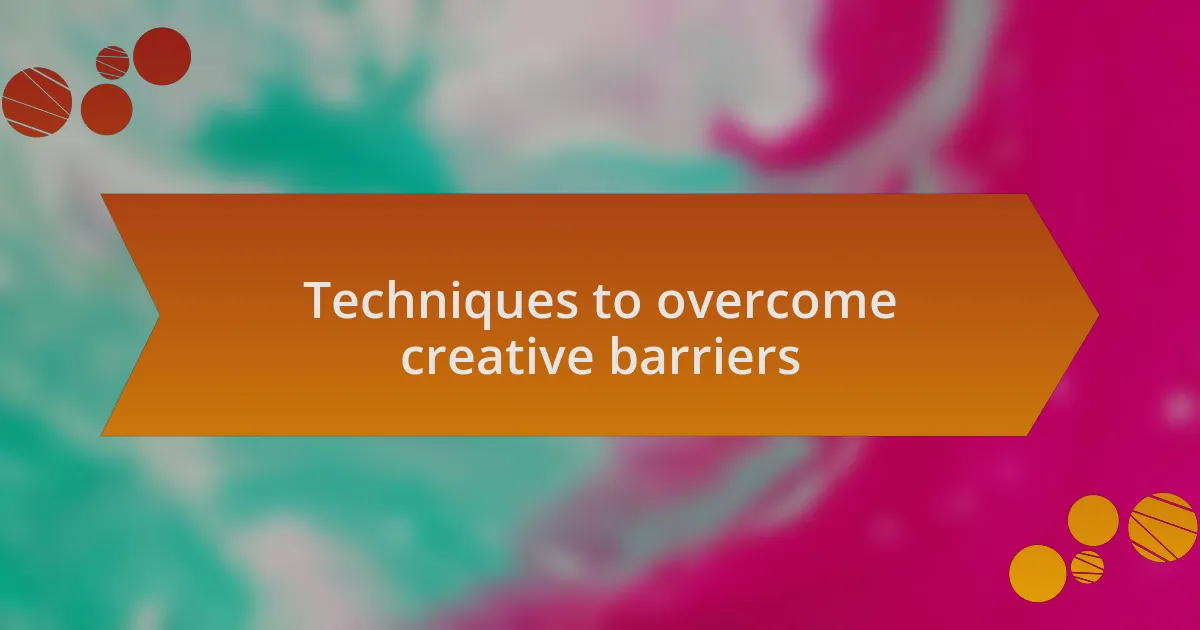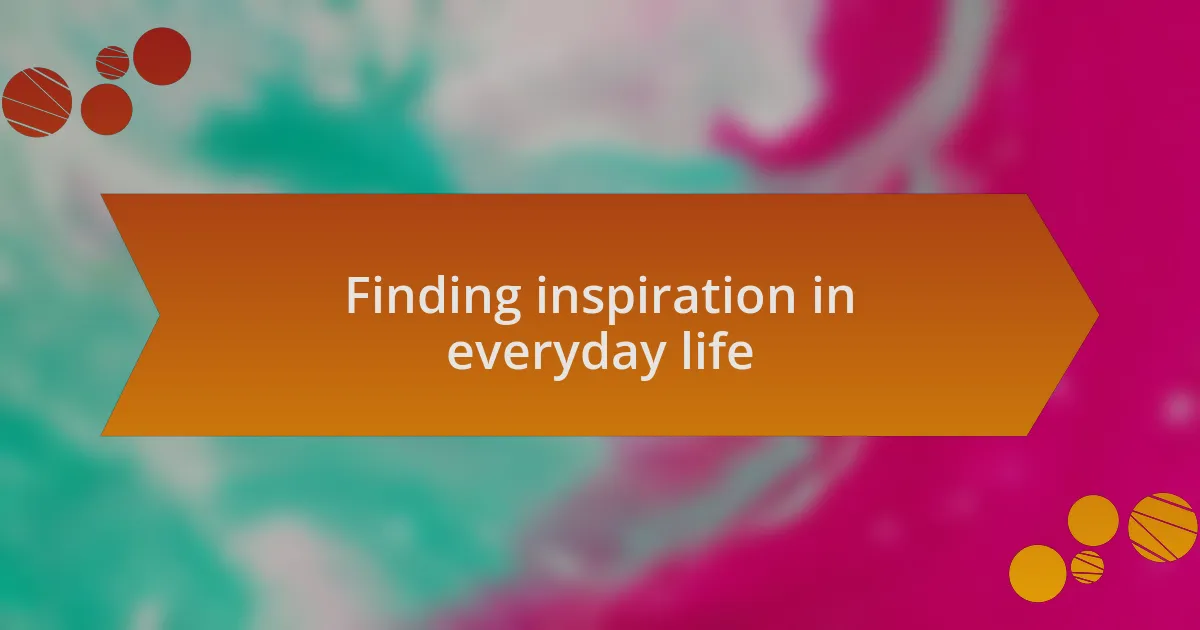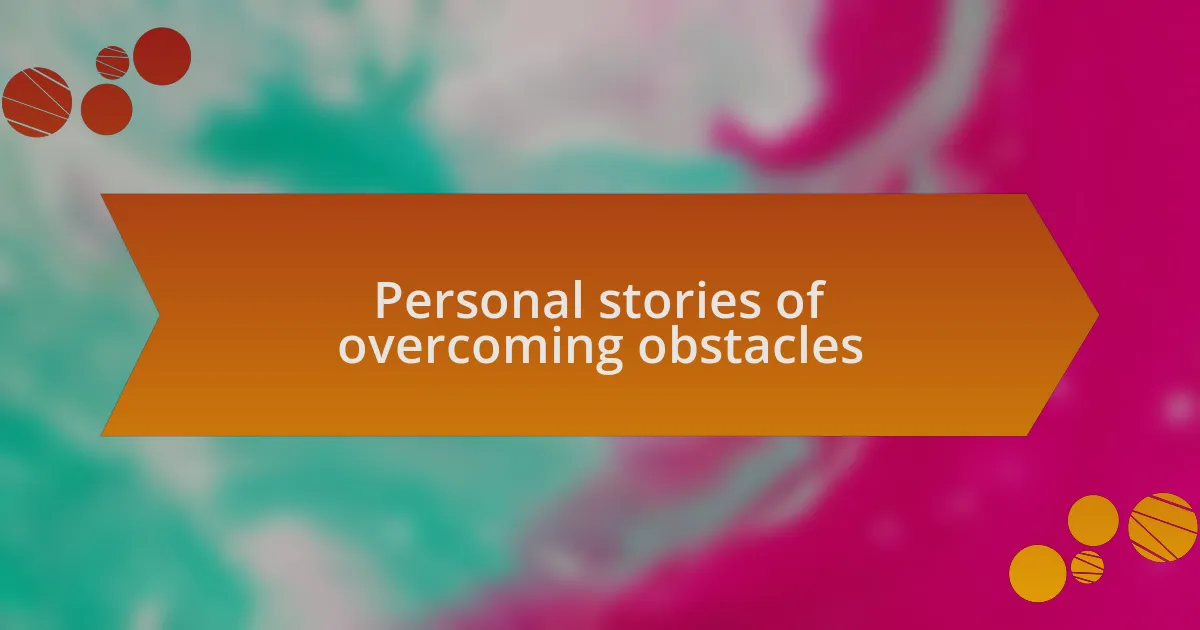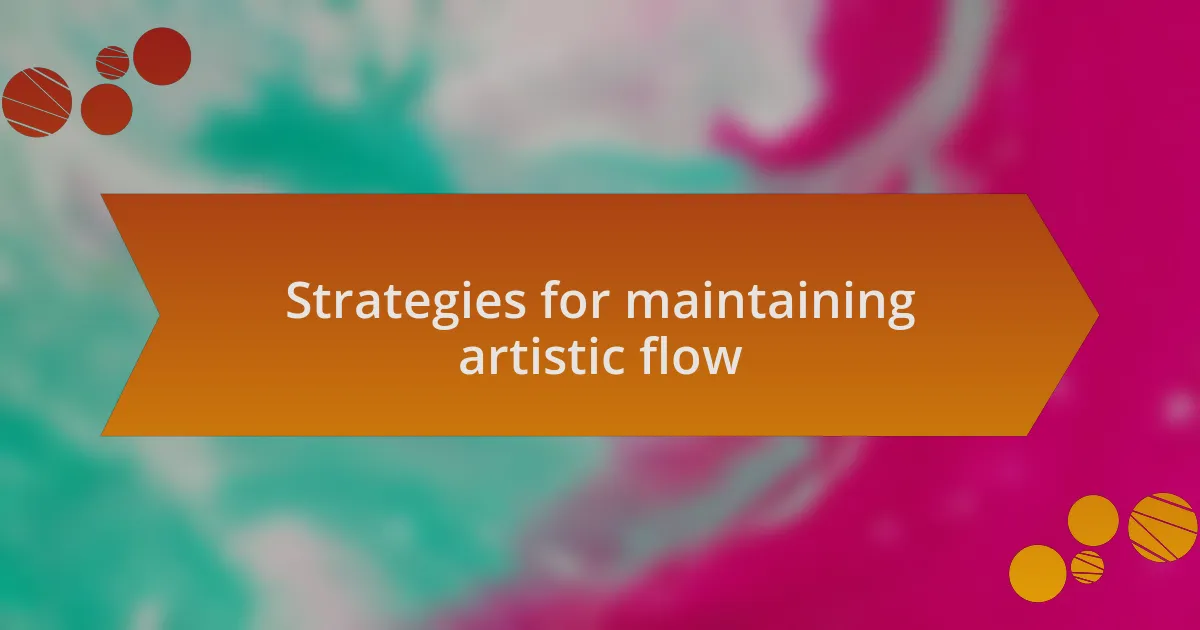Key takeaways:
- Artist’s block can stem from high expectations, external pressures, and emotional struggles; embracing imperfections may aid in overcoming it.
- Creating without the pressure of perfection allows for deeper connections with oneself and the audience, fostering resilience and adaptability.
- Changing environments and intentional play, along with engaging with other artists, are effective techniques for breaking through creative barriers.
- Finding inspiration in everyday life and maintaining a dedicated creative routine can help sustain artistic flow and rejuvenate creativity.
Understanding artist’s block
Artist’s block can feel like a heavy fog, obscuring your creativity and leaving you frustrated. I remember sitting in front of a blank canvas, my mind racing yet completely void of inspiration. It’s as if your creative energies are trapped, and the harder you push to release them, the more they seem to resist. Have you ever felt that clash between your passion and your inability to express it?
Understanding why artist’s block occurs is crucial for overcoming it. Sometimes, it springs from high expectations, both from ourselves and others. I once found myself paralyzed by the fear of not living up to an ideal, and it took a toll on my art. What if instead of striving for perfection, we embraced the messy, unfiltered nature of creation?
It can also arise from external pressures and life changes—a move to a new city, or even personal loss. One season, after losing a close friend, I struggled to find joy in painting. This taught me that sometimes, artist’s block is a signal to delve deeper into our emotions. Embracing these feelings instead of shying away can be the first step towards rekindling our creative spark.
Importance of overcoming artist’s block
Overcoming artist’s block is essential for nurturing our creativity. I remember a period when I was creatively stagnant, feeling overwhelmed by the pressure to produce something groundbreaking. It was during this time that I realized the importance of simply creating for the joy of it, rather than chasing perfection. Have you ever found that when you let go of expectations, your imagination flows more freely?
When we push through artist’s block, we develop resilience and adaptability. One of my most memorable breakthroughs came from experimenting with a new medium, which I initially approached with reluctance. That leap into the unknown reignited my passion for art and opened doors to untapped potential I hadn’t even recognized. Isn’t it fascinating how a simple shift in perspective can transform our approach to creativity?
Moreover, overcoming artist’s block can deepen our connection to both ourselves and our audience. During a particularly uninspired phase, I began to journal my thoughts and feelings about my art, leading to a newfound clarity that resonated with my audience. By sharing these candid reflections, I found not only my voice again but also strengthened my bond with those who engaged with my work. Don’t you think that when we embrace vulnerability, we create art that truly speaks to others?

Techniques to overcome creative barriers
One effective technique I’ve found to overcome creative barriers is changing my environment. There was a time when I felt stuck in my home studio, surrounded by familiar walls that stifled my inspiration. By simply moving my painting supplies to a different location—a local park—I discovered vibrant colors in nature that sparked new ideas. Have you ever noticed how a change of scenery can refresh your perspective?
Another method that has proven invaluable to me is intentional play. I recall a day when I decided to set aside my usual brushes and instead used my fingers, which felt liberating. Embracing this playful approach allowed me to tap into my inner child, reminding me that creating doesn’t always need to be serious or structured. Have you experienced the joy that comes from experimenting without boundaries?
Lastly, I actively engage with other artists whenever I encounter creative blocks. I’ve participated in art circles where we share our experiences, frustrations, and triumphs. Listening to others has often sparked my own ideas and reignited my passion. It’s incredible how collaboration can break down isolating barriers. Have you ever thought about how discussions with fellow creatives can reenergize your artistic spirit?

Finding inspiration in everyday life
Everyday life offers a treasure trove of inspiration if we take the time to look closely. I often find myself captivated by the ordinary moments, like the play of light on my kitchen wall during sunrise. These fleeting instances remind me that beauty lies in simplicity, urging me to capture such moments in my art. Have you ever paused to appreciate the unique patterns created by the shadows on your floor?
I recall a day when I was grocery shopping, feeling uninspired and disconnected. As I wandered through the aisles, I noticed the vibrant colors of fruits and vegetables, each one a miniature masterpiece in its own right. The way they were arranged sparked an idea for a new series based on food as art, blending the mundane with creativity. When you think about it, could the things we often overlook become our greatest sources of inspiration?
Moreover, I’ve learned that listening to the stories of the people around me can breathe life into my work. A simple conversation with my neighbor about her childhood memories of gardening led me to explore themes of growth and nostalgia in my paintings. Connecting with others not only deepens my understanding of the world but also offers new perspectives that often translate into my artistic endeavors. How many stories are waiting to be uncovered in the everyday exchanges we share?

Personal stories of overcoming obstacles
During a particularly challenging period in my artistic journey, I found myself staring at a blank canvas, paralyzed by what felt like an insurmountable wall. One evening, I took a spontaneous trip to a nearby park and sat on a bench, allowing myself to simply observe the world. As I watched a child joyfully chasing bubbles, I realized that sometimes, stepping away from the pressure to create can unlock the creativity we need most. Have you ever found that a change in scenery can reignite your passion?
There was a time when rejection stung deeply, leaving me questioning my abilities. After submitting a piece to a local exhibition and receiving a polite, but firm ‘no,’ I felt defeated. Instead of retreating, I chose to be vulnerable and share my experience with a fellow artist. Their encouragement and insights reminded me that every setback is just another step in the creative process. Doesn’t it often take an external voice to help us rediscover our inner strength?
On another occasion, while I was grappling with self-doubt, I decided to delve into art history for inspiration. I discovered the struggles of renowned artists like Van Gogh, who fought similar battles with their creativity. Reading about their persistence reminded me that even the most celebrated figures faced obstacles. How empowering is it to know that we’re not alone in our struggles?

Strategies for maintaining artistic flow
Artistic flow can often feel elusive, but I’ve found that setting aside a dedicated time for creativity each day helps immensely. I remember a specific time when I committed to a daily sketching ritual; no expectations attached—just me, my sketchbook, and a cup of coffee. This routine not only eased the pressure to produce something ‘great’ but also allowed my imagination to roam freely. Have you ever tried carving out that sacred time for your art?
Another strategy that has served me well is embracing small, experimental projects. There was one summer when I decided to paint a series of mini canvases, each focusing on a different theme like ‘water’ and ‘movement.’ The key was keeping those projects light and fun—I felt more at ease to explore without the weight of perfectionism. This approach taught me that creativity thrives in a playful environment. What small projects have sparked joy for you in your artistic journey?
Lastly, I often find inspiration in nature, just like that day in the park when I let my surroundings fuel my imagination. When I feel stuck, I take short walks, soaking in the colors, textures, and sounds around me. Recently, I spent an afternoon near a serene lake, where the reflections and ripples inspired a new series in my work. Isn’t it amazing how stepping outside can rejuvenate our artistic spirits?